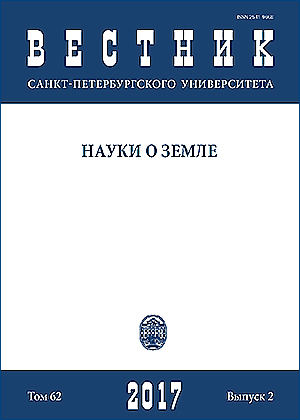Assessment of ecological status of central district (Saint-Petersburg) on the basis of ecophytoindication
DOI:
https://doi.org/10.21638/11701/spbu07.2017.206Abstract
Study of green plantation in Central district of St.-Petersburg demonstrated the basic elements of polluters Fe, Cr, Ni, Pb, which included in association of elements selected by factor analysis. Species peculiarities of accumulation of trace elements lie in the fact that leaves and bark of lime (Tilia cordata Mill.) have high content of majority of defined elements; Zn and Cd are accumulated in organs of poplar (Populus x berolinensis Dippel.). Ratios of microelement content city/background are: for lime leaves – Fe (9,4), Pb (5,3), Cr (4,7), Zn (4,6), Cu (4,5); for poplar leaves – Cd (6,3), Pb (5,5), Fe (4,7), Zn (3,7), Cr (3,2); for lime bark – Cu (15,9), Fe (9,6), Pb (7,5), Cr (5,8), Ba (5,5), Ni (5,1); for poplar bark – Cu (9,6), Fe (5,5), Pb (4,9), Ba (3,9). Analysis of summarized pollution indicators showed that the leaves of the trees represent seasonal pollution of the urban environment, and characterize it as medium and high, and the bark of the trees, accumulating pollutants during many years, represents the medium, high, and very high level of pollution in the district (foe lime bark 54% of samples characterized very high level of pollution). Spatial distribution of contaminants is very patchy, due to anthropogenic impact and the history of development for particular areas. It is noted that the plants exposed to the highest load landings on the streets with heavy traffic vehicles.
Keywords:
ecophytoindication, pollution, microelements, urbogeosystem
Downloads
References
References
Downloads
Published
How to Cite
Issue
Section
License
Articles of "Vestnik of Saint Petersburg University. Earth Sciences" are open access distributed under the terms of the License Agreement with Saint Petersburg State University, which permits to the authors unrestricted distribution and self-archiving free of charge.






